So many indoor plant care guides talk about houseplants needing “well-draining soil” or “loose, airy soil.” But what does that really mean? What kind of soil should you use?
Let’s take a deep dive into the best soil for indoor plants, what to look for in potting soil, and how to make your own potting mix.
Table of Contents
TL;DR: The quick answer
Just want a quick answer on the best soil for indoor plants? Generally, you’ll want:
- A mix specifically made for houseplants. Don’t just go grab some soil from your backyard, or your indoor plants will suffer.
- A pre-made potting mix. You can use a mix specifically formulated for the types of houseplants you have, a generic mix for hardier houseplants like pothos, or add an amendment to a mix to improve drainage or aeration.
- OR a homemade soilless mix. For strong, healthy plants, consider making your own mix that you can customize to different kinds of plants.
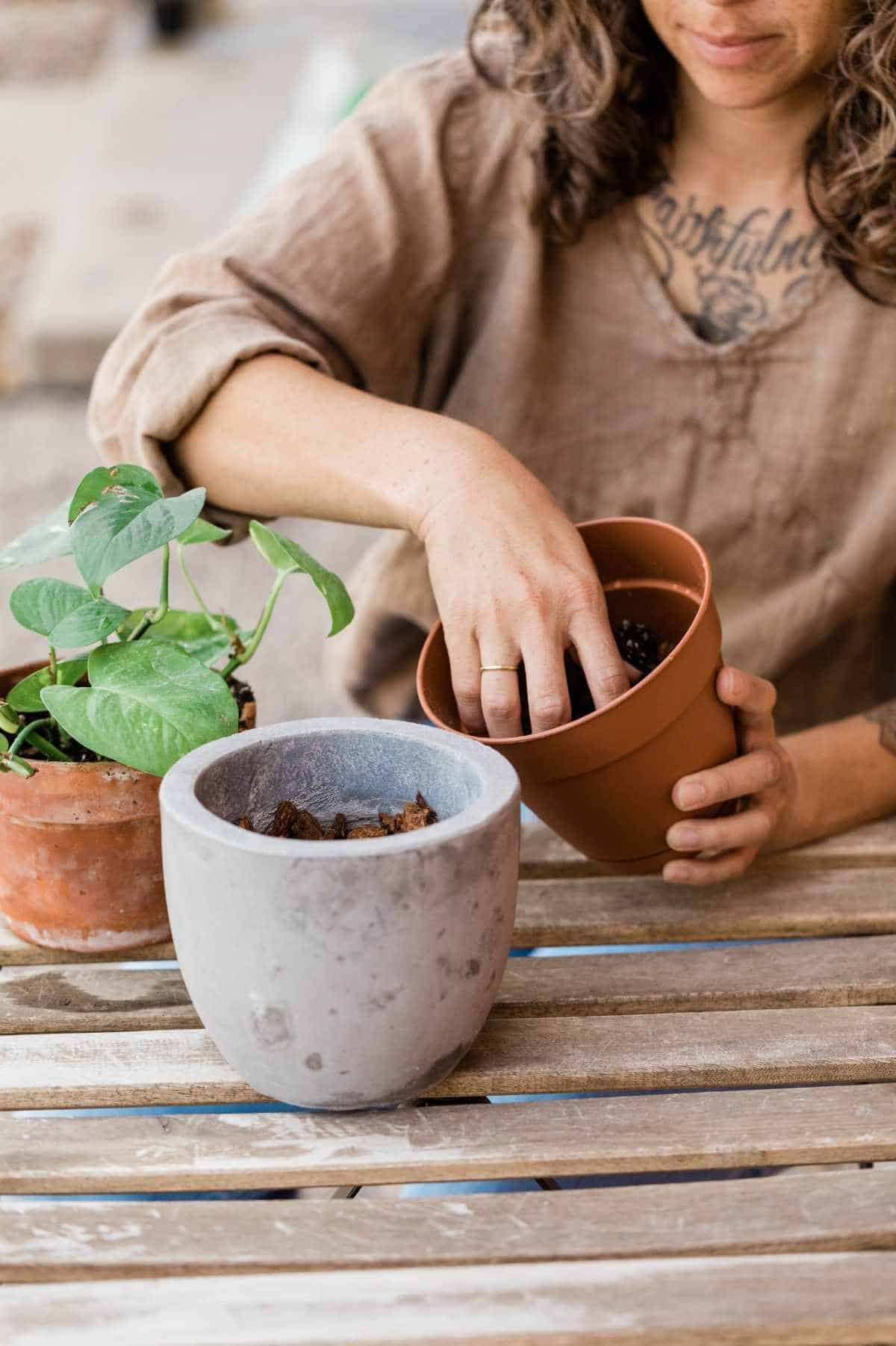
Can I use garden soil for indoor plants?
Sorry Charlie, but no. Most garden soil or topsoil is too heavy and dense for potted plants, including indoor plants. Over time, it will become compacted in the pots, suffocating the roots of the plants. Instead, you need an actual potting mix.
What to look for when buying potting soil
The best potting mix for houseplants is one that doesn’t contain soil at all. Soil isn’t sterile, and can contain pathogens or weed seeds—plus, it can be way too heavy for houseplants. Most potting mixes for indoor plants are a blend of sphagnum peat moss, perlite, and organic material such as humus. Here’s what to look for at the garden center:
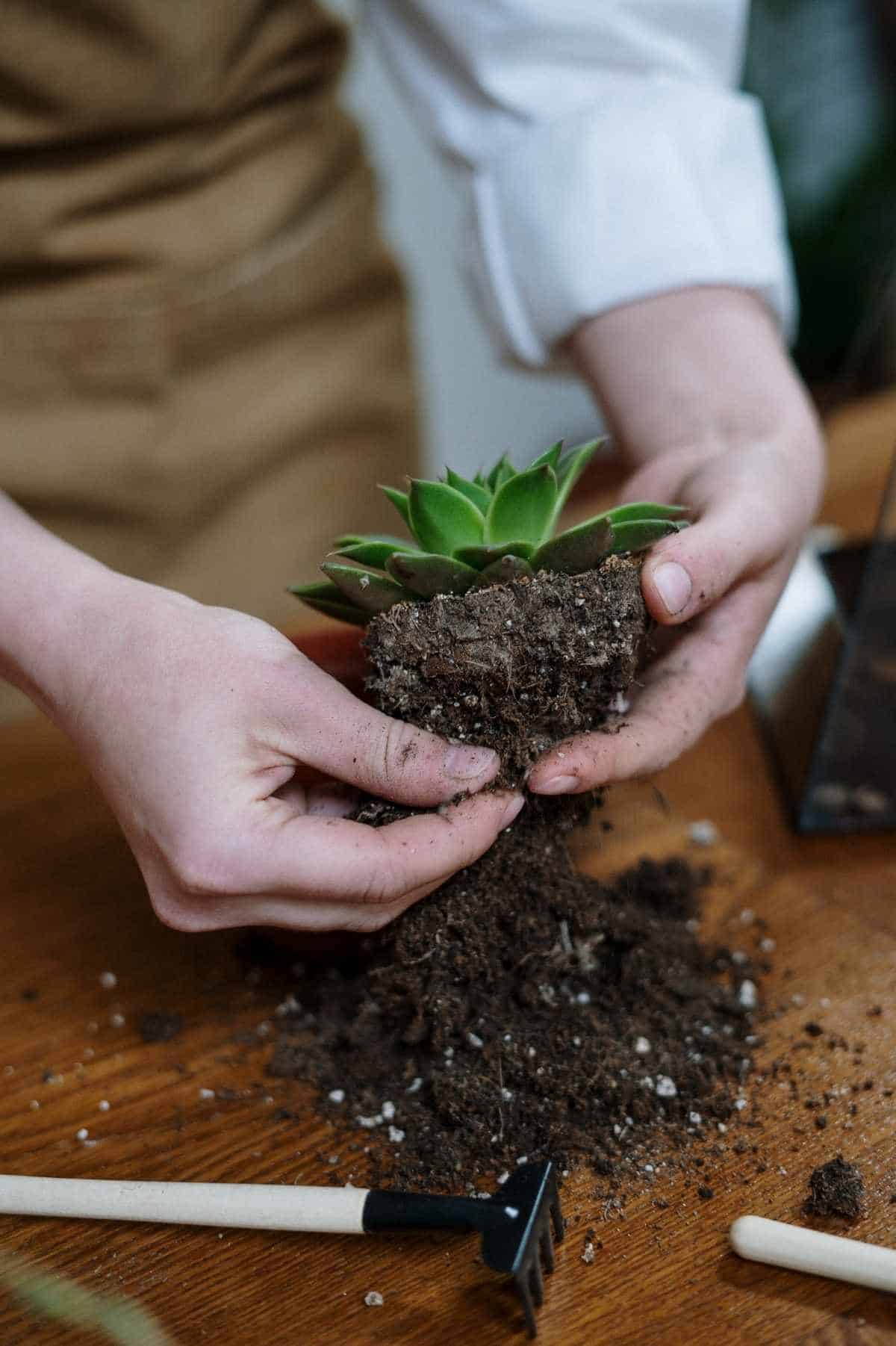
Do you want peat moss?
The problem with peat moss is that it isn’t sustainable—while it eventually regenerates, it takes ages, and peat bogs can’t keep up with the rate at which it is harvested. As a result, some places, such as the United Kingdom, are moving towards banning the use of peat moss in potting mixes.
Coconut coir shows up more and more in potting soil mixes, as it serves much the same purpose as peat moss but is more sustainable. Coco coir is shredded coconut husks, which are otherwise typically considered to be a waste material.
Organic or not?
There are two types of organic that get talked about regarding soil:
- Organic in that it comes from living things like plants. Coco coir is an organic material because it comes from coconuts, while perlite is inorganic because it comes from rocks.
- Organic in that it doesn’t contain synthetic fertilizers, and could be used to grow organic vegetables.
The first kind of organic is much more important for houseplants—you aren’t going to eat your Scindapsus! But if avoiding synthetic fertilizers is important to you, or you want to have full control over the fertilizer your indoor plants get, skip the Miracle-Gro Indoor Potting Mix, and instead look for something that is either labeled as OMRI-certified organic, or one that doesn’t list synthetic fertilizers in the ingredient list.
What’s in it?
If the bag doesn’t list the ingredients, skip that brand and choose something else. Some potting mixes use styrofoam to help with drainage and other ingredients that aren’t great for plants. Plus, you want to know if the mix already contains fertilizer before you add your own.
 Do you need a specialty mix?
Do you need a specialty mix?
Many brands sell specialized potting mixes, formulated for different types of plants.
- Cactus Mix—Cactus mixes replicate the kind of environment that cacti grow in naturally, and are typically grittier and made of inorganic materials. As a result, a good cactus mix drains quickly and doesn’t retain water.
- Orchid Mix—Most orchids are epiphytes, which means they grow on tree trunks and other plants rather than in soil. Because of this, orchids don’t do well in regular potting soil—they need more space around their roots than other plants. An orchid mix is typically heavier on bark, clay aggregate, and rocks such as perlite, pumice, and lava rock.
If you want to grow these types of plants, you can absolutely buy one of the specialty mixes—it can save you a lot of time, and leave you with fewer bags to put away after repotting. Otherwise, you can make your own mix, which we’ll talk about in a bit!
Can’t I just use pre-bagged soil for indoor plants?
For many houseplants, yes. But some plants have needs that a standard potting mix can’t meet—they may need faster drainage, more aeration, or even some water retention.
For these plants, you can start with a standard potting mix and just add an amendment or two. Alternatively, you can make your own soilless mix (more on that in a sec!). When we want to use a potting mix for a base, we like to start with:
- Espoma Organic Potting Mix
- FoxFarm Mixes
- Black Gold Organic Potting Soil
- SolSoils
- Mother soil mixes
- Creative Plant Mama mixes
But more and more often, we make our own soilless mixes.

What should I add to my potting mix?
Different soil amendments serve different purposes, which can be broken down into these categories:
Aeration And Drainage Materials
Lots of houseplants don’t like “wet feet,” or water sitting around their roots—it can lead to root rot, and eventually kill an indoor plant. For that reason, many houseplants do best in well-draining soil. These amendments can help improve the drainage of soil:
- Perlite is a volcanic rock that has been expanded with heat. It is lightweight, retains a little moisture, and aerates the soil, improving its drainage. The downside of perlite is that it is so lightweight, it eventually rises to the top of the soil, where it is less useful.
- Pumice is another volcanic rock that improves soil aeration. It is porous, retains nutrients that plants need, and doesn’t break down over time. Unlike perlite, it stays mixed throughout the soil, rather than floating to the top.
- Coco coir, as mentioned above, is made of shredded coconut husks. It absorbs some water but otherwise drains rapidly, leaving soil moist but not waterlogged.
- Vermiculite is a lightweight soil amendment that keeps soil light and fluffy, while also retaining water and nutrients. Note: Vermiculite was recently found to carry a risk of asbestos exposure, so we have chosen not to use it in our soil mixes.
- Sand improves soil drainage and is a good choice for plants that like drier conditions, like cacti and succulents.
- Horticultural charcoal, or activated charcoal, absorbs excess water from the soil, protecting plant roots from suffocation. As a bonus, it is also a natural anti-microbial that protects the roots from disease, and it serves as a filter for salts and other impurities.
- Pine or fir bark is sold coarsely cut to add airflow and drainage to a potting mix. It may also be sold as orchid bark, as it is the kind of medium that epiphytes like orchids thrive in.
 Soil Builders
Soil Builders
- Worm castings are a form of manure made by, you guessed it, earthworms. The castings contain lots of nutrients that plants need to thrive, including nitrogen, potassium, phosphorus, iron, sulfur, and calcium. You can mix a small amount of earthworm castings into the soil mixture. Alternatively, add a tablespoon or two of worm castings to the top of the soil every month or so as a fertilizer.
- Compost can boost the nutrient level of soil as well. Add a small amount to the top of the soil to fertilize your plants.
How to Make the Best Soil for Indoor Plants
Now that you know about all the possible ingredients and amendments, let’s make a potting mix!
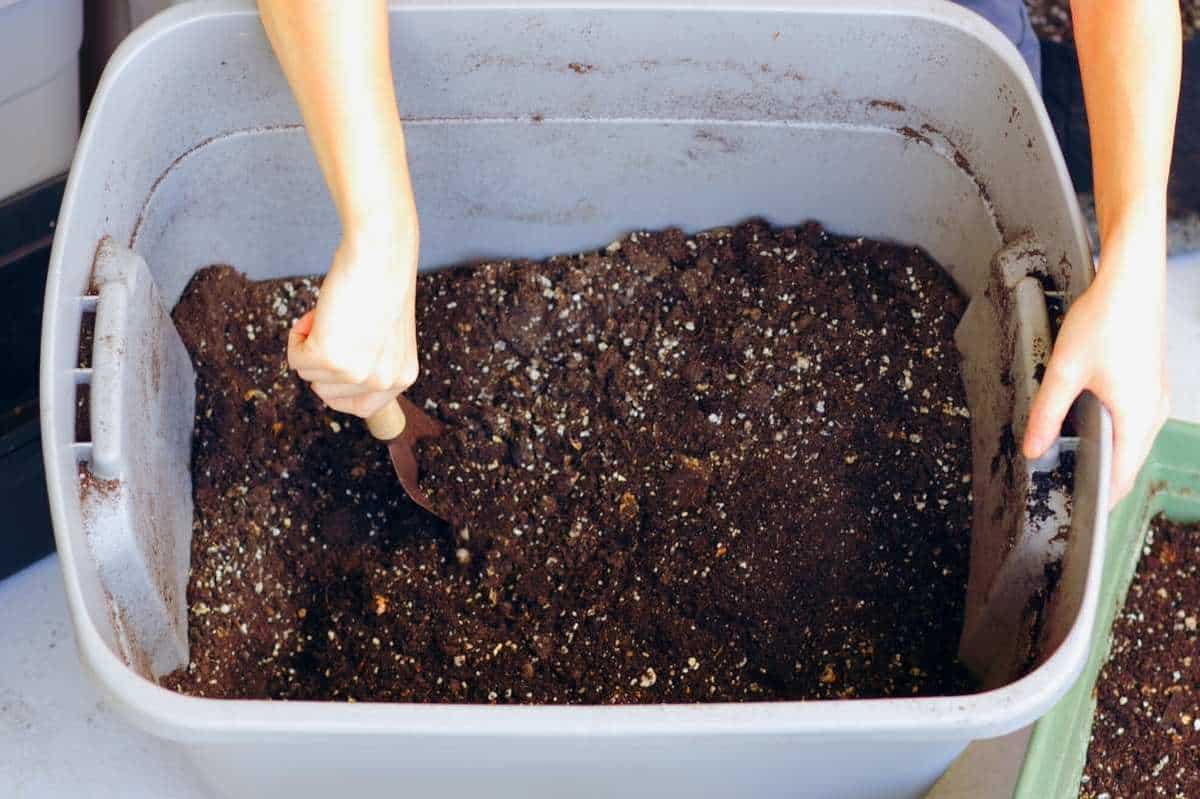 You’ll want a big bucket or tub to do your mixing in—we like these tubs. They come in all sorts of colors, are easy to clean, and their flexible sides make them easy to pour from. Otherwise, any sort of bucket or storage tub will do.
You’ll want a big bucket or tub to do your mixing in—we like these tubs. They come in all sorts of colors, are easy to clean, and their flexible sides make them easy to pour from. Otherwise, any sort of bucket or storage tub will do.
A soil scoop will also make this project a little less messy, but it isn’t absolutely necessary—a trowel, measuring cup, or even a big spoon will work as well!
Pour in your ingredients, mix them up, and you’re ready to repot some plants. Store any excess potting mix in an airtight container or zip-top bag. Be sure to label it so you remember what kind of mix it is.
The beauty of making your own potting mix is that you can make the recipe your own. Know you tend to overwater? Add some extra pumice for better drainage. Have a calathea that likes consistently moist soil? Add some coco coir or perlite. Once you know what all the ingredients do, you can easily adjust your potting mix to meet your plants’ needs.
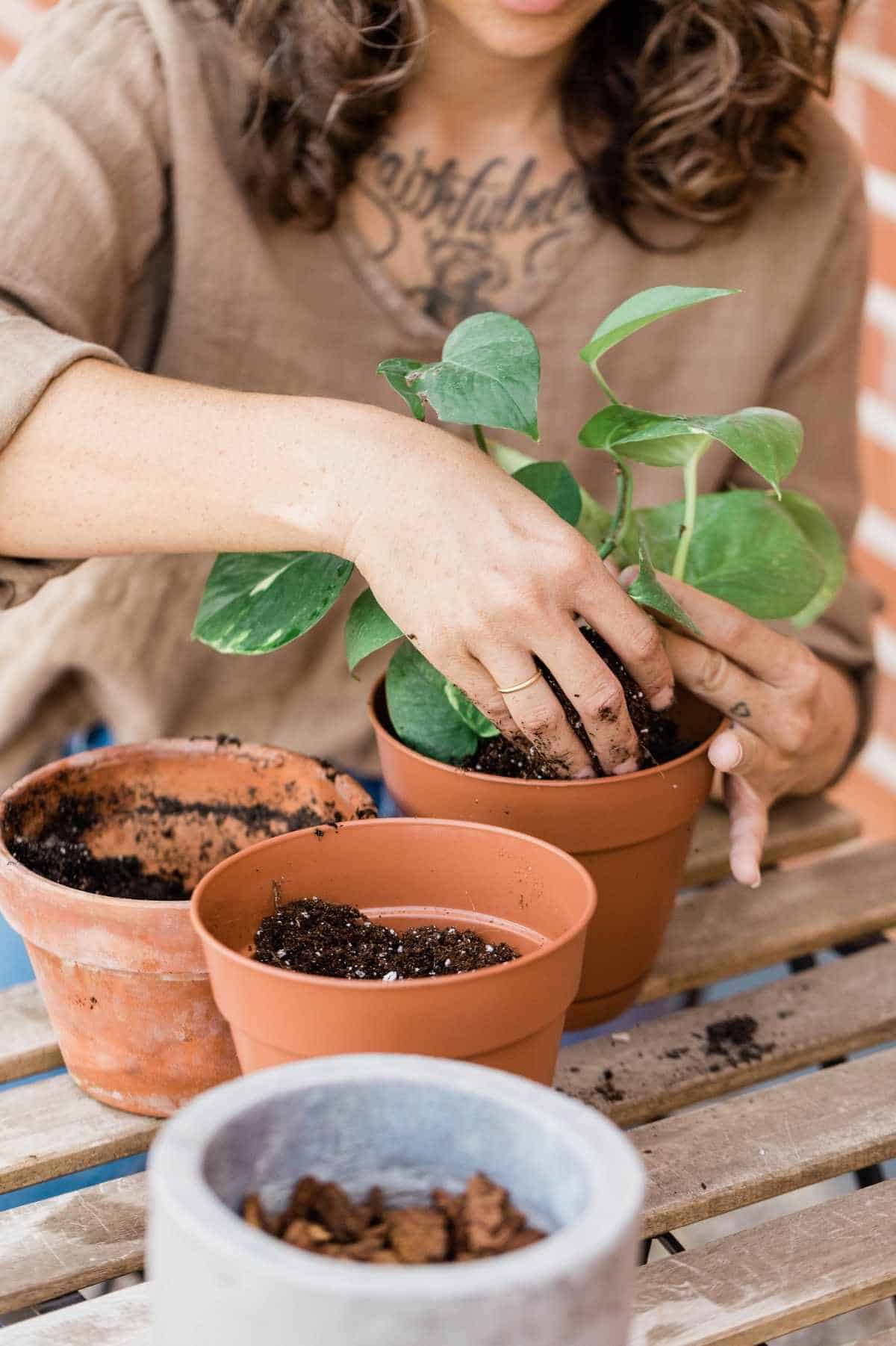
Here are some mixes to use as a jumping off point:
- 1/2-3/4 potting soil + 1/4-1/2 drainage ingredient like coco coir or orchid bark. This blend will give you a potting mix that is rich but well-draining and will work well for many tropical plants. Top off with some worm castings, if desired.
- Potting soil + sand + perlite or pumice for a porous mix that is suitable for succulents and cacti.
- Equal parts orchid bark, coco coir, and pumice, with a small amount each of horticultural charcoal and worm castings. This is my preferred soilless mix for aroids such as philodendrons and monsteras. I try to have the bark, coir, and pumice make up around 3/4 of the mix. You can use perlite in place of the pumice, but be aware that it will float to the top of the soil over time.

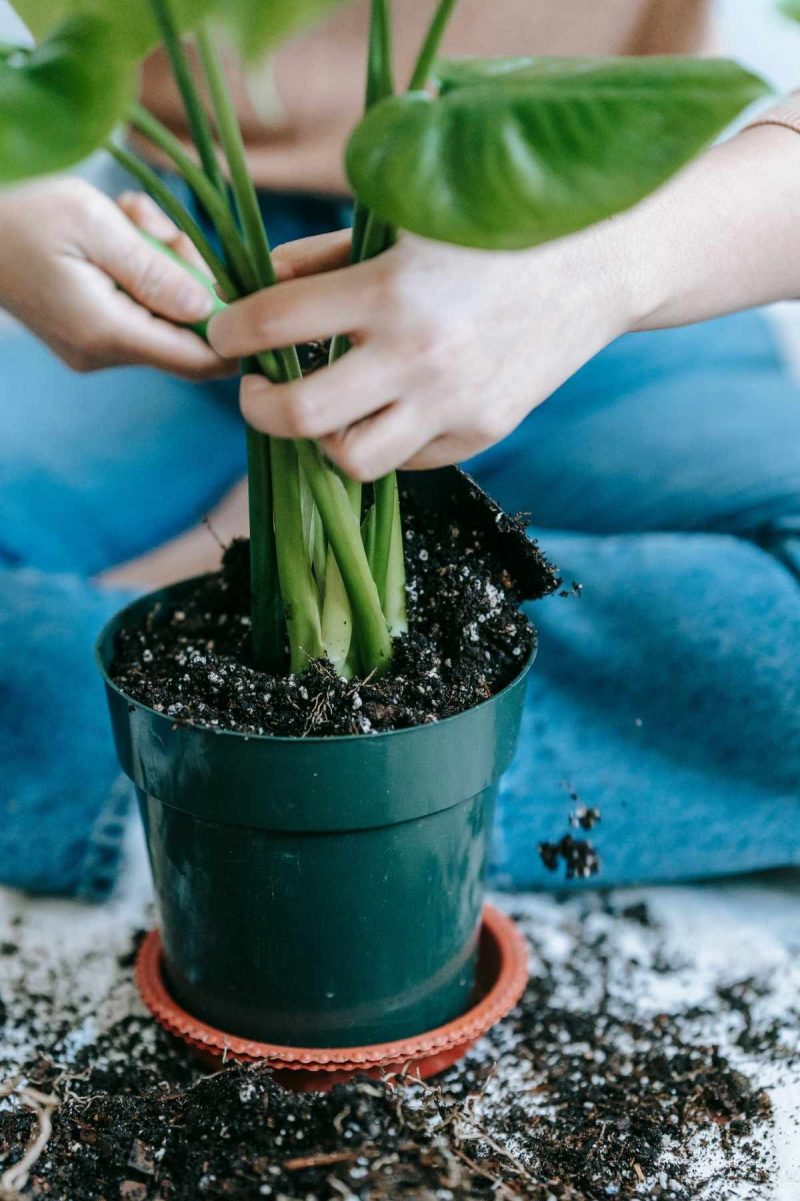
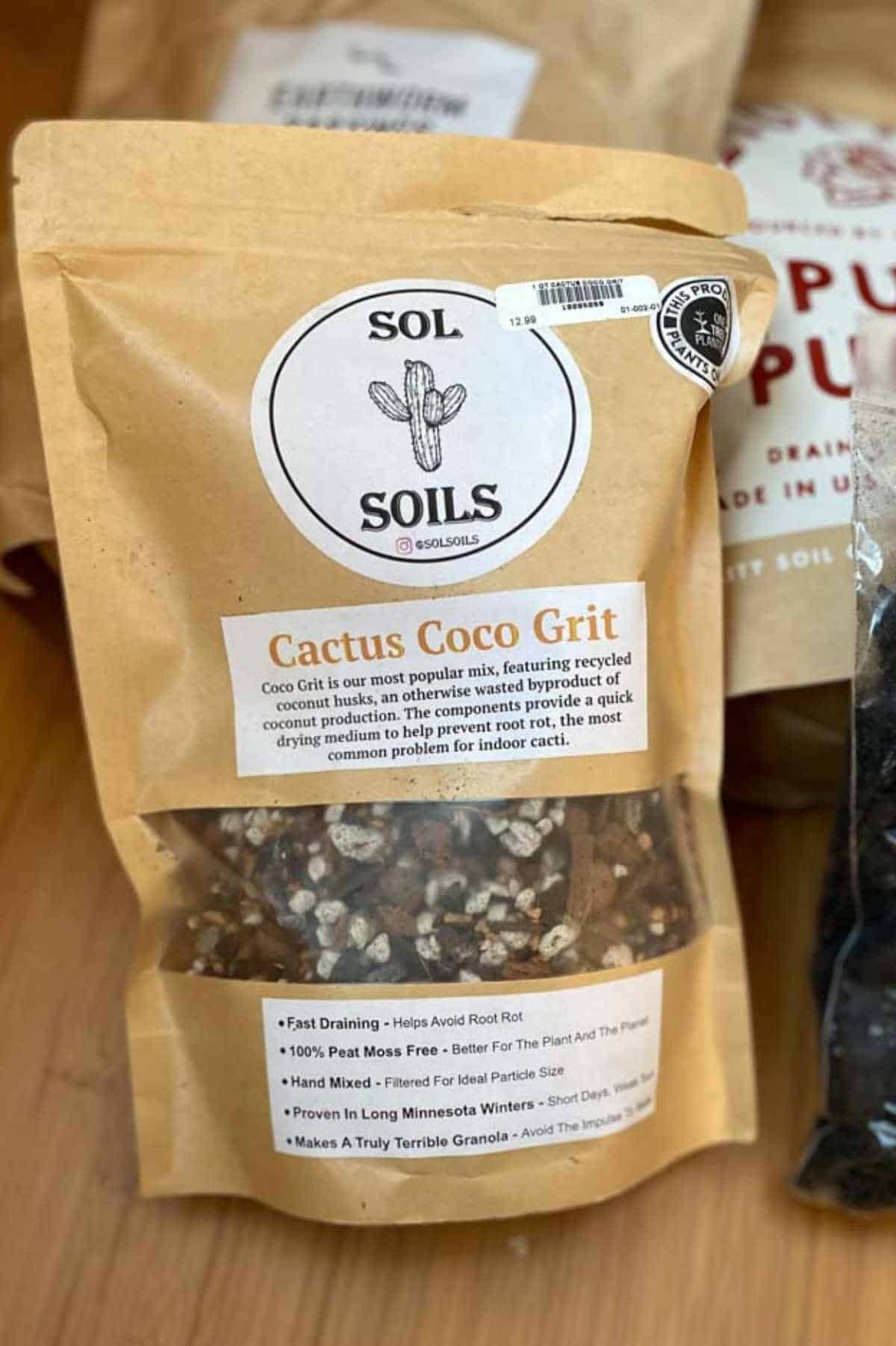 Do you need a specialty mix?
Do you need a specialty mix?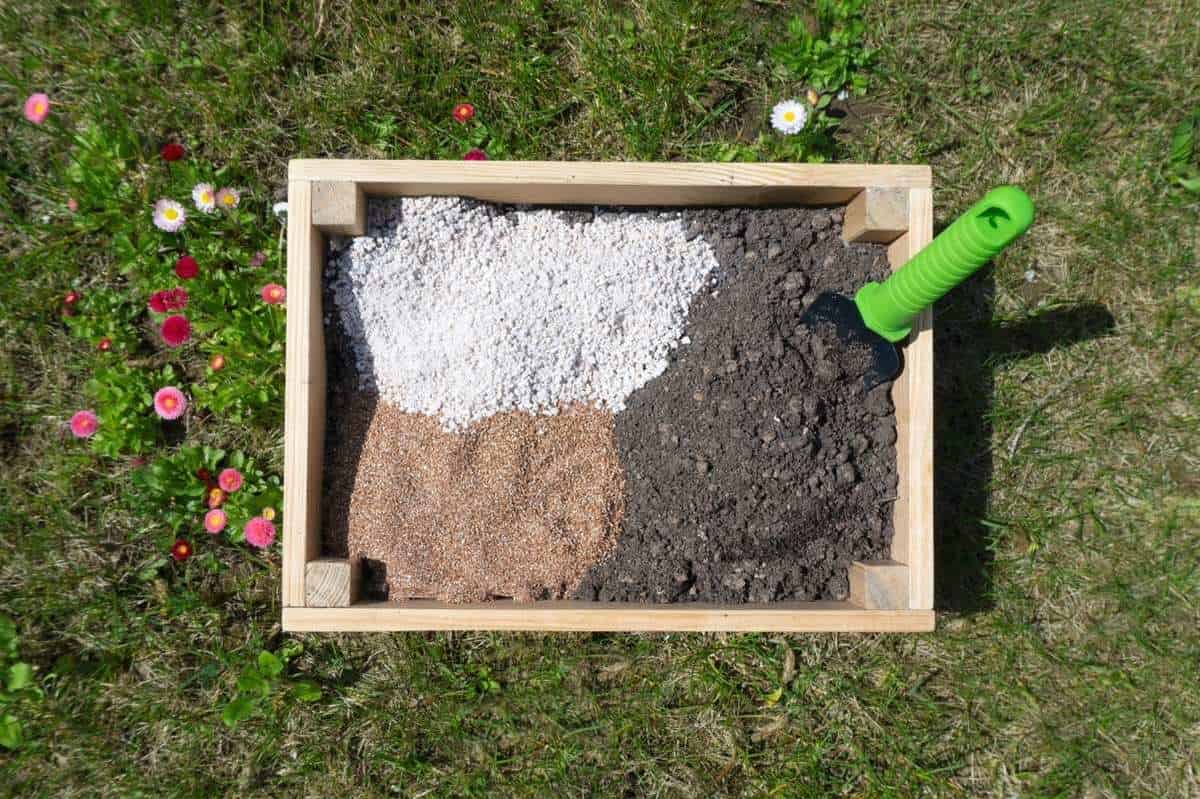 Soil Builders
Soil Builders




